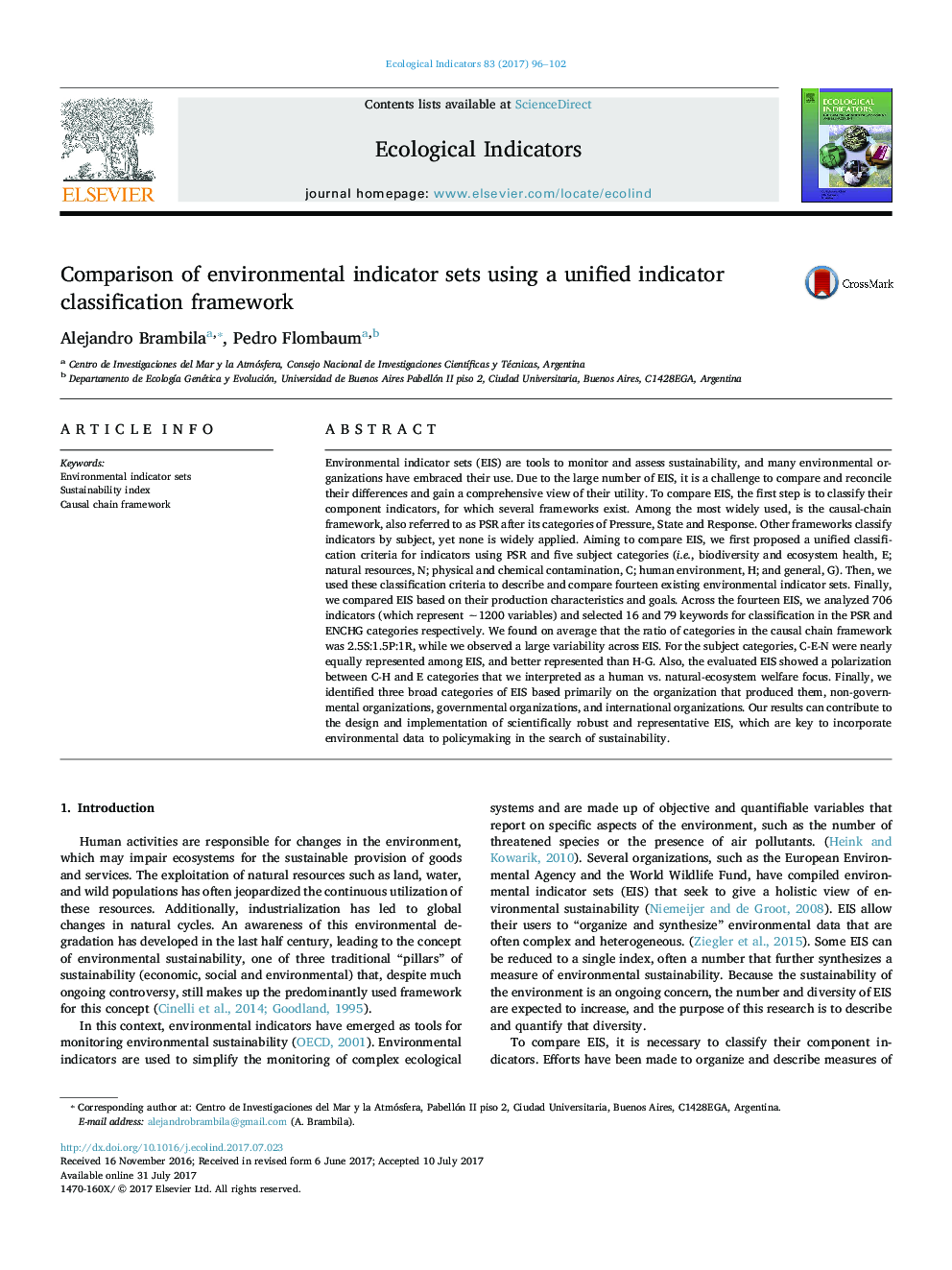| Article ID | Journal | Published Year | Pages | File Type |
|---|---|---|---|---|
| 5741481 | Ecological Indicators | 2017 | 7 Pages |
â¢We developed novel criteria to classify indicators using PSR/subject frameworks.â¢Pressure indicators were the most frequently used and response the least.â¢We identify a subject based biotic-contamination continuum for 14 indicator sets.â¢EIS shared similarities based on type of organizer, and were grouped accordingly.
Environmental indicator sets (EIS) are tools to monitor and assess sustainability, and many environmental organizations have embraced their use. Due to the large number of EIS, it is a challenge to compare and reconcile their differences and gain a comprehensive view of their utility. To compare EIS, the first step is to classify their component indicators, for which several frameworks exist. Among the most widely used, is the causal-chain framework, also referred to as PSR after its categories of Pressure, State and Response. Other frameworks classify indicators by subject, yet none is widely applied. Aiming to compare EIS, we first proposed a unified classification criteria for indicators using PSR and five subject categories (i.e., biodiversity and ecosystem health, E; natural resources, N; physical and chemical contamination, C; human environment, H; and general, G). Then, we used these classification criteria to describe and compare fourteen existing environmental indicator sets. Finally, we compared EIS based on their production characteristics and goals. Across the fourteen EIS, we analyzed 706 indicators (which represent â¼1200 variables) and selected 16 and 79 keywords for classification in the PSR and ENCHG categories respectively. We found on average that the ratio of categories in the causal chain framework was 2.5S:1.5P:1R, while we observed a large variability across EIS. For the subject categories, C-E-N were nearly equally represented among EIS, and better represented than H-G. Also, the evaluated EIS showed a polarization between C-H and E categories that we interpreted as a human vs. natural-ecosystem welfare focus. Finally, we identified three broad categories of EIS based primarily on the organization that produced them, non-governmental organizations, governmental organizations, and international organizations. Our results can contribute to the design and implementation of scientifically robust and representative EIS, which are key to incorporate environmental data to policymaking in the search of sustainability.
